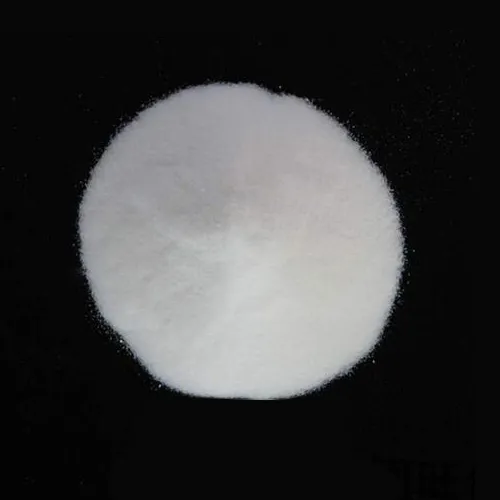When you hear “phosphate,” you might think of fertilizers, food additives, or even biology.
But what is actually in phosphate?
Chemically speaking, a phosphate is a compound or ion that contains phosphorus (P) and oxygen (O) atoms.
The core structure is the phosphate ion (PO₄³⁻) — a tetrahedral group where one phosphorus atom is surrounded by four oxygen atoms.
This simple but powerful chemical group plays a fundamental role in life, agriculture, and industry.
1. Chemical Composition of Phosphate
At the molecular level, phosphate is built from:
1 phosphorus atom (P)
4 oxygen atoms (O)
🔹 The Phosphate Ion
Chemical formula: PO₄³⁻
Charge: -3
Structure: Tetrahedral (phosphorus at the center, oxygen at the corners)
Each oxygen atom can either:
Be singly bonded to phosphorus (P–O⁻), carrying a negative charge, or
Be double-bonded (P=O), forming part of the stable structure.
This configuration gives the phosphate ion its high stability and reactivity, allowing it to form a wide variety of salts, acids, and esters.
2. How Phosphate Forms
Phosphate originates from the oxidation of elemental phosphorus or decomposition of minerals containing phosphorus.
🧪 Basic Reaction:
Here, phosphorus combines with oxygen to form phosphorus pentoxide (P₄O₁₀), which reacts with water to yield phosphoric acid (H₃PO₄).
This acid can then lose hydrogen ions to form phosphate ions (PO₄³⁻) and their variants.
3. Different Forms of Phosphate
Phosphate compounds come in several chemical and physical forms:
| Type | Formula | Description | Example |
|---|---|---|---|
| Orthophosphate | PO₄³⁻ | The simplest form, found in biology | Sodium phosphate |
| Hydrogen phosphate | HPO₄²⁻ | Intermediate acidic form | Disodium hydrogen phosphate |
| Dihydrogen phosphate | H₂PO₄⁻ | Mildly acidic form | Monosodium phosphate |
| Condensed phosphates (polyphosphates) | (PO₃)ₙ⁻ | Chains or rings of phosphate units | Sodium tripolyphosphate |
| Phosphoric acid | H₃PO₄ | Parent acid of phosphate compounds | Food acidulant, fertilizer precursor |
All of these contain the phosphate group, but differ in acid-base balance, bonding, and reactivity.
4. Organic vs Inorganic Phosphate
| Type | Definition | Examples | Function |
|---|---|---|---|
| Inorganic phosphate (Pi) | Free phosphate ions or salts in minerals and solutions | Ca₃(PO₄)₂, Na₃PO₄ | Fertilizers, detergents, buffers |
| Organic phosphate | Phosphate groups bonded to carbon-containing molecules | ATP, DNA, phospholipids | Energy transfer, cell structure, genetics |
Both forms are essential, but their roles differ dramatically:
Inorganic phosphates dominate geological and industrial systems.
Organic phosphates drive biochemical processes inside living organisms.
5. Common Phosphate Compounds
Phosphates combine with metals and bases to form various salts.
Here are some of the most important:
| Compound | Chemical Formula | Typical Use |
|---|---|---|
| Calcium phosphate | Ca₃(PO₄)₂ | Bone and teeth mineral, fertilizer |
| Dicalcium phosphate | CaHPO₄ | Feed additive, supplement |
| Sodium phosphate | Na₃PO₄ | Cleaning agents, food additive |
| Potassium phosphate | K₃PO₄ | Fertilizer, buffering agent |
| Ammonium phosphate | (NH₄)₃PO₄ | Fertilizer |
| Iron phosphate | FePO₄ | Battery materials, corrosion inhibitors |
| Aluminum phosphate | AlPO₄ | Ceramics, fireproof coatings |
Each compound retains the PO₄³⁻ unit, but its properties change depending on the attached metal or cation.
6. Where Phosphate Is Found
Phosphate occurs naturally and synthetically in multiple environments.
🌍 In Nature
Found in phosphate rocks (e.g., apatite: Ca₅(PO₄)₃(F,Cl,OH))
Present in soil, sediments, and oceans
Cycles through the phosphorus cycle (rock → plant → animal → decay → rock)
🧬 In Living Organisms
Found in bones and teeth (as calcium phosphate)
Forms part of the DNA and RNA backbones
Stores and transfers energy via ATP (adenosine triphosphate)
Regulates cell function through phosphorylation reactions
Phosphate is therefore essential for life, growth, and energy metabolism.
7. Phosphate in Fertilizers
Phosphorus is one of the three primary nutrients in fertilizers (N–P–K).
The P value represents available phosphate (as P₂O₅ equivalent).
Common phosphate fertilizers:
Single superphosphate (SSP): 16–20% P₂O₅
Triple superphosphate (TSP): 44–48% P₂O₅
Monoammonium phosphate (MAP): 11-52-0 (N–P–K)
Diammonium phosphate (DAP): 18-46-0
These provide phosphate ions that dissolve in soil water, allowing plants to absorb phosphorus for root growth and energy transfer.
8. Phosphate in Food and Nutrition
Phosphates are widely used in food for their functional and nutritional properties.
🍞 Functional Roles
Buffering agent: stabilizes pH in beverages and meats
Leavening agent: reacts with baking soda to release CO₂
Emulsifier: improves texture and moisture retention in processed foods
Mineral supplement: provides dietary phosphorus and calcium
🍗 Nutritional Roles
Phosphates supply phosphorus, a major mineral essential for:
Bone and tooth formation
Energy metabolism (ATP)
Enzyme activation
Cellular signaling
Recommended daily intake: ~700 mg phosphorus per adult (mainly from phosphates in food).
9. Industrial and Technical Uses
Phosphates are key ingredients in many industries beyond agriculture and food:
| Sector | Application | Example Compound |
|---|---|---|
| Detergent industry | Water softening, scale control | Sodium tripolyphosphate (STPP) |
| Water treatment | Corrosion inhibition, pH buffering | Polyphosphates, orthophosphates |
| Metal finishing | Surface coating, anti-corrosion | Zinc phosphate |
| Ceramics and glass | Fluxing agent | Calcium phosphate |
| Battery materials | Cathode chemistry | Lithium iron phosphate (LiFePO₄) |
Their versatility arises from the reactivity and stability of the phosphate group.
10. The Phosphorus Cycle
Phosphate plays a critical role in Earth’s biogeochemical phosphorus cycle, which moves phosphorus between rocks, soil, water, and living organisms.
The Cycle Includes:
Weathering of phosphate rocks → releases phosphate into soil
Plant uptake → incorporates phosphate into organic matter
Animal consumption → transfers phosphorus through food chains
Decomposition → returns phosphate to the environment
Sedimentation → forms new phosphate minerals
Unlike carbon or nitrogen, phosphorus has no gaseous phase, so it cycles slowly, making it a limiting nutrient in many ecosystems.
11. Environmental Impact
While essential, excessive phosphate release causes eutrophication—the overgrowth of algae in lakes and rivers.
⚠️ Consequences:
Algal blooms reduce oxygen levels
Aquatic life suffers or dies
Water quality deteriorates
To prevent this, phosphate use in detergents and wastewater discharge is now strictly regulated in many countries.
12. Analytical Detection of Phosphate
Phosphate content in water, soil, or food is often measured using colorimetric methods, such as the molybdenum blue assay, or ion chromatography.
| Sample Type | Typical Range | Purpose |
|---|---|---|
| Drinking water | <0.1 mg/L | Corrosion control |
| Fertilizer | 10–50% P₂O₅ | Nutrient content |
| Animal feed | 1–3% P | Nutrition |
| Wastewater | 0.5–10 mg/L | Pollution control |
Accurate phosphate analysis is crucial for environmental monitoring and industrial quality control.
13. Summary Table: What Is in Phosphate
| Component | Symbol | Function |
|---|---|---|
| Phosphorus | P | Central atom, key element for energy and structure |
| Oxygen | O | Forms bonds with phosphorus, determines acidity, and charge |
| Hydrogen (in acids) | H | Found in phosphoric acid and hydrogen phosphates |
| Metal cations | Ca²⁺, Na⁺, K⁺, NH₄⁺ | Form salts and buffer systems |
So, phosphate typically contains phosphorus and oxygen, and may also include hydrogen or metal ions, depending on whether it’s an acid, salt, or ester.
14. Conclusion
So, what is in phosphate?
At its core, phosphate is composed of:
One phosphorus atom (P)
Four oxygen atoms (O)
Together, they form the phosphate ion (PO₄³⁻) — a fundamental chemical building block in both living systems and industrial applications.
Phosphate compounds can also contain hydrogen (as in phosphoric acid) or metal ions (as in calcium phosphate or sodium phosphate).
They are vital to:
Life (DNA, bones, ATP)
Agriculture (fertilizers)
Industry (cleaners, coatings, ceramics)
In short:
Phosphorus gives phosphate its identity, and oxygen gives it its power.
Understanding what’s in phosphate helps us appreciate its central role in chemistry, biology, and sustainability.

